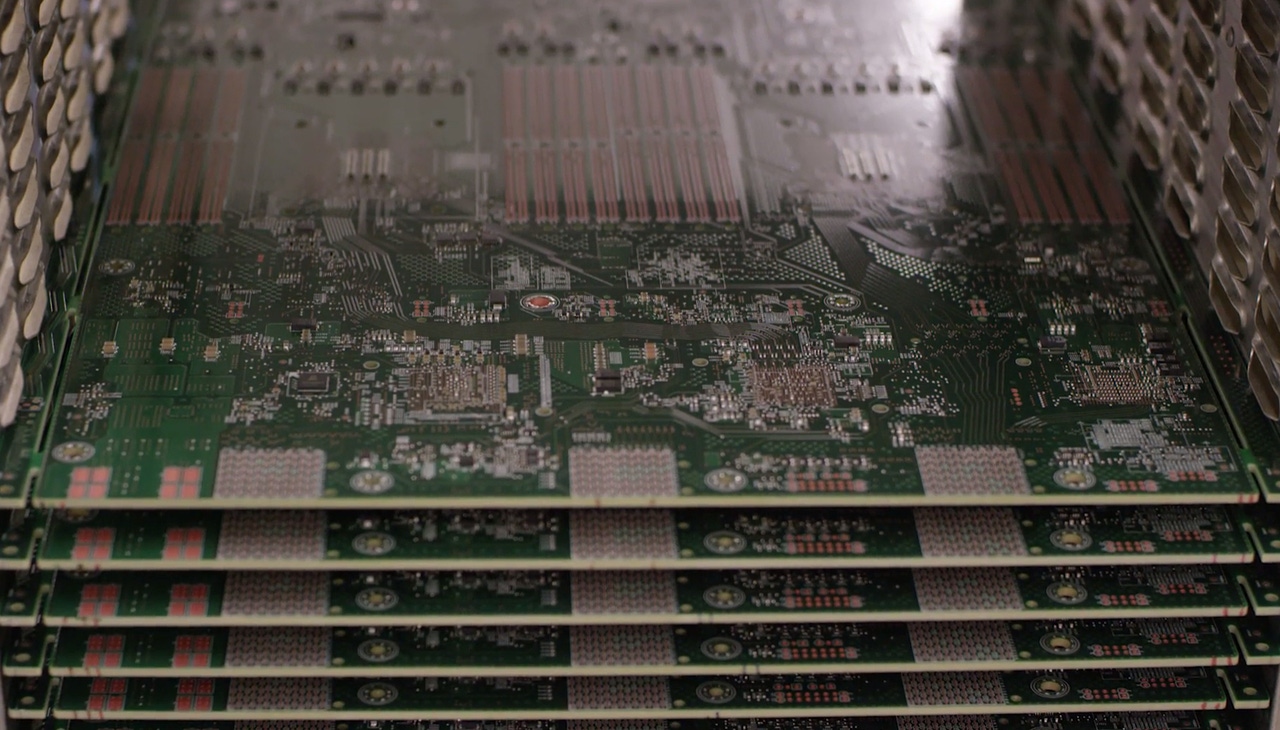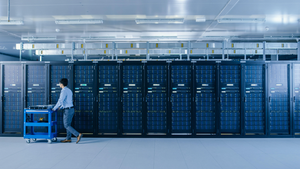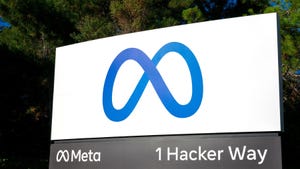Comparing Top All-Flash Data Center Storage ArraysComparing Top All-Flash Data Center Storage Arrays
As all-flash storage becomes commonplace in the data center, there are some important differences from vendor to vendor.
September 26, 2017

It really feels like we’re having more conversations about the emergence of all-flash arrays in the data center than ever. In fact, it’s less about hybrid and more about all-flash and solid state. Gartner recently predicted that by 2021, 50 percent of data centers will use SSAs for high-performance computing and big data workloads, up from less than 10 percent today.
IDC sees all-flash technologies being adopted for even more use cases. "Advancements in SSD technology and lower price points are driving broader SSD adoption and are making SSDs a ubiquitous storage technology," said Jeff Janukowicz, research VP for Solid State Drives and Enabling Technologies. "SSD adoption in the client PC and in the enterprise datacenter market continues to increase, which will drive SSD unit shipments to grow at a 2015–2020 CAGR of 16.9%."
When we look at the data center itself, we see some big driving factors when it comes to all-flash technologies. And, there are some big benefits to adopting SSD and AFAs:
1. Less space (also less power and cooling)
2. Better all-around performance
3. Greater levels of multi-tenancy
4. Removal of legacy storage systems
5. Faster backup, recovery, and snapshotting capabilities
6. Improved levels of uptime and resiliency
7. Faster levels of innovation, development, and research
8. Greater levels of infrastructure convergence
9. Smaller arrays mean more support for ROBOs
10. Newer arrays mean better integration with cloud and virtualization
It’s really no wonder that so many companies are looking at AFAs as an option for their primary workloads and applications. Remember, this isn’t a new technology; there has been a lot of innovation around AFAs, and SSD has become an extremely resilient technology.
That said, it is a pretty crowded market. Let’s look at the overall market and understand some of the key players.
Pure Storage
Pure definitely took the market by storm, starting out with powerful solid-state arrays (FlashArray//M) and now a new low-latency all-NVMe FlashArray//X series SSA. For big data needs Pure delivered a new file storage array called FlashBlade. The beauty of Pure is in its simplicity. Simple, yet powerful UI coupled with a great support architecture. The company’s Evergreen maintenance model allows you to upgrade your controller every three years and offers dollar-for-dollar trade-in value if you want to upgrade your entire appliance. You don’t get charged for storage you’ve already purchased. So, if you upgrade from 50TB to 100TB, you’re only paying for that 50TB increment. These arrays (and the management software) are feature-rich and enterprise-ready. Everything from replication to compression and deduplication is included. What also sets Pure apart is that it is still a standalone player making the best of partnerships, such as the one with Cisco. If you’re looking to evolve your storage architecture or explore new types of converged solutions (FlashStack), Pure Storage could be a good place to start.
Dell EMC
Since the two companies’ merger, the Dell EMC offering has grown stronger. In this portfolio you’ll have everything from general solid-state arrays to use case-specific solutions like those for VDI. Furthermore, the solutions from VMAX All Flash and the Unity All Flash array are being leveraged for some seriously demanding applications. Finally, even the Isilon architecture now has all-flash models. Although we’re just looking at the all-flash market, know that Dell EMC now also offers quite a few hybrid options as well. Keep in mind that although Dell EMC offers many different types of storage solutions, you’ll need to make sure you really know your use case here. If you pick the right technology for the right application, you’ll be very happy. However, not all features work with each other, and not all administrative functions are cross-compatible. That said, the VMAX and Unity All Flash family of products offers huge performance, data reduction, and virtualization integration benefits. Finally, the new capacity-on-demand purchasing program gives organizations a cool way to get storage consumption-style offerings.
Hewlett Packard Enterprise
HPE has been doing a great job re-positioning itself within the all-flash market. The acquisition of Nimble is going to help them go a long way. Nimble’s Predictive All Flash series is a great product that’s easy to use and fast to deploy. Now, coupled with 3PAR StoreServe, HPE is using Nible to take a broader aim at the flash market. One thing to note is that for now, Nimble and 3PAR are different architectures. Hopefully we’ll see more integration. Both Nimble and 3PAR AF architectures, however, are capable of utilizing NVMe PCIe SSDs. For now, when it comes to working with both of these systems, you’ll need to understand your use case prior to deployment. One great thing here is the direct integration with other HPE data center systems. You can deploy 3PAR AF arrays in large environments as well as smaller, less demanding locations. If you’re looking at Nimble alone, know that they’ll have hybrid options too. Like I mentioned earlier, Nimble is very easy to deploy and manage. Furthermore, their InfoSight Predictive Analytics gives you next-gen visibility and management controls.
NetApp
Let’s pretend like FlashRay was a trial by fire; if that’s the case, NetApp clearly learned a thing or two. With SolidFire now completely integrated, the company has two powerful arrays to offer: the SolidFire (SF) product line and the Fabric-Attached Storage (AFF) series. On that note, the NetApp All Flash Fabric-Attached Storage (AFF) is a powerful storage array that’s really driving data center use cases. It supports a wide number of protocols, has deduplication and compression (which you can turn on and off), and can directly integrate with other data center systems. As far as maximum capacity goes, this thing can scale to 88 petabytes when in cluster mode. Similarly, the SF series delivers powerful scale-out capabilities for use cases around big data and analytics. NetApp has really come a long way here. The AFF and the SF should be considerations when looking at all-flash systems.
IBM
It’s always nice when your flash architecture is organically grown. For example, IBM FlashSystem solutions are built upon IBM's own flash module technology. This helps optimize the flash drive components for performance and reliability. Overall, IBM continues to be strong in the all-flash market. Their software-defined storage architecture (Spectrum Storage) adds a lot of features into existing IBM storage solutions and third-party storage options. Furthermore, you have native access into NFS and cloud object storage. Finally, to keep up with other competitors, IBM now offers great maintenance and support options as well.
This is by no means an exhaustive list of all-flash data center storage vendors. There are many others, so let me give a few shout-outs to other leaders in the space:
Solutions from Kaminario now have a sixth-generation K2 all-flash array. They too leverage powerful NVMe/PCIe-connected offload engines, making this array ready for even more NVMe and NVMe-based fabric. Furthermore, their “lifetime SSD wear-out” guarantee makes buying one of these types of arrays very attractive.
Hitachi Data Systems (HDS) has similarly shifted its market focus to all-flash solutions. In late 2016, they launched the new Virtual Storage Plaform F1500 to expand on existing models. What’s interesting with HDS are some of the niche solutions they offer. For example, you can securely delete sensitive data points via HDS services, which meet National Institute of Standards and Technology (NIST) standards.
Another honorable mention goes to Tintri for their specialization in designing solid-state arrays to be used in sever-virtualization environments. So, if you’re running a lot of virtualization, this type of system may give you some great operational advantages. You’ll leverage very deep integration with VMware, Hyper-V, OpenStack, and even Microsoft System Center Virtual Machine Manager (SCVMM).
Finally, Tegile offers very competitive 5-year SSD reliability upgrades and IntelliCare support. The company boasts 99.999% availability guarantees. The flexibility of its software architecture allows organizations to scale and grow between systems very easily.
Final Thoughts
As someone who works in the consulting and VAR world, the best piece of advice I can give you when working with various storage arrays is that you don’t have to do this alone. A good partner can help you conduct some critical activities to better understand which type of AFA or SSD technology you’ll need. You need to answer questions like:
1. What is your level of virtualization?
2. What type of storage do you have today?
3. What type of applications do you have today; what about in the near future?
4. Are there many remote offices?
5. Do you require back to be done on the AFA?
Believe me, this is a short list. You’ll need to truly understand your environment and your use cases to deploy the right type of solution.
A big point here is that not all SSD and AFA technologies are built the same, and they certainly have different feature sets. For example, some might not offer synchronous replication or deduplication; others might not support block protocols like FC, FCoE, or iSCSI. Some may be very limited in how they provision storage to physical hosts.
Similarly, other solutions might be powerful but only focus on low-latency, high-performance workloads. In those cases, you sacrifice density for performance.
Bottom line: Do your research, know your use case, and test these systems out!
Storage vendors and their partners are always happy to conduct proof-of-concepts (PoC) to ensure you have the right technology in place. Whichever way you decide to work with all-flash arrays, make sure that you are in fact investing in these technologies. Outside of the density, performance, and virtualization benefits you create some big benefits for your data center and business. These are powerful technologies which will impact the types of workloads you deploy in the very near future.
About the Author
You May Also Like







